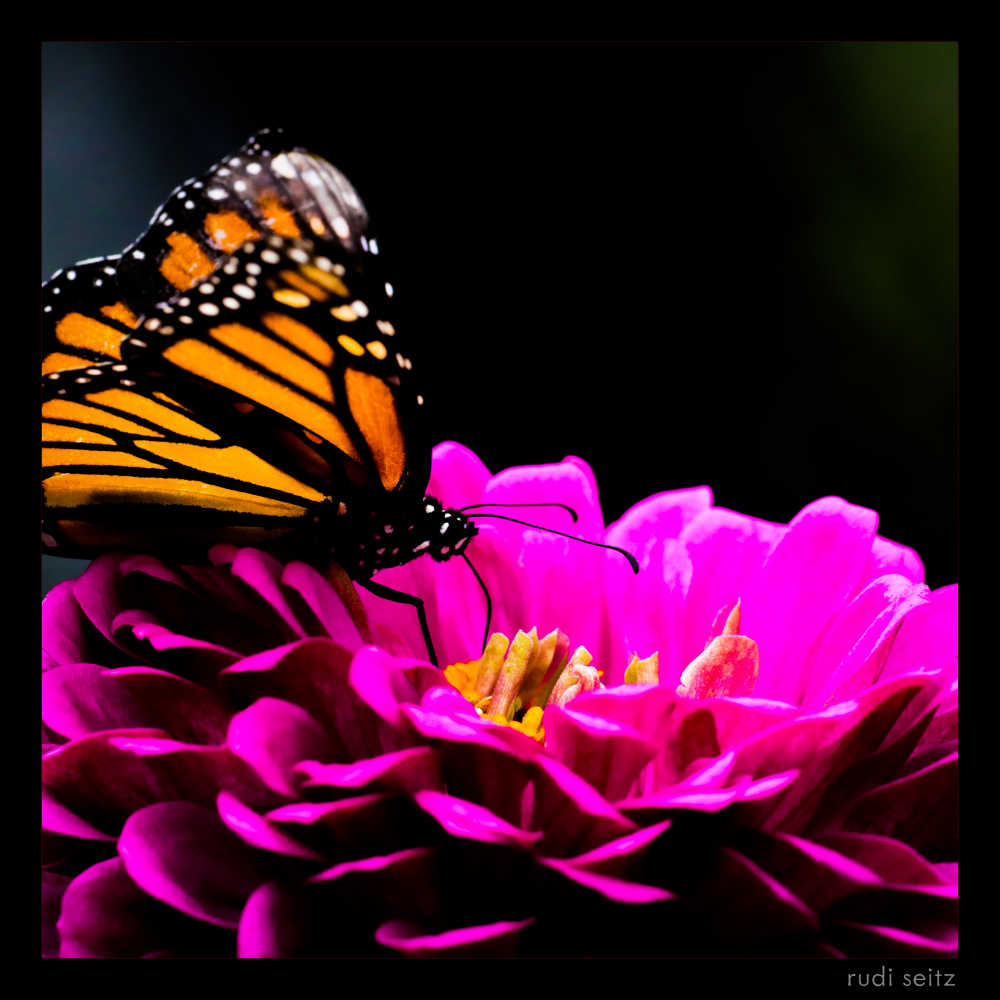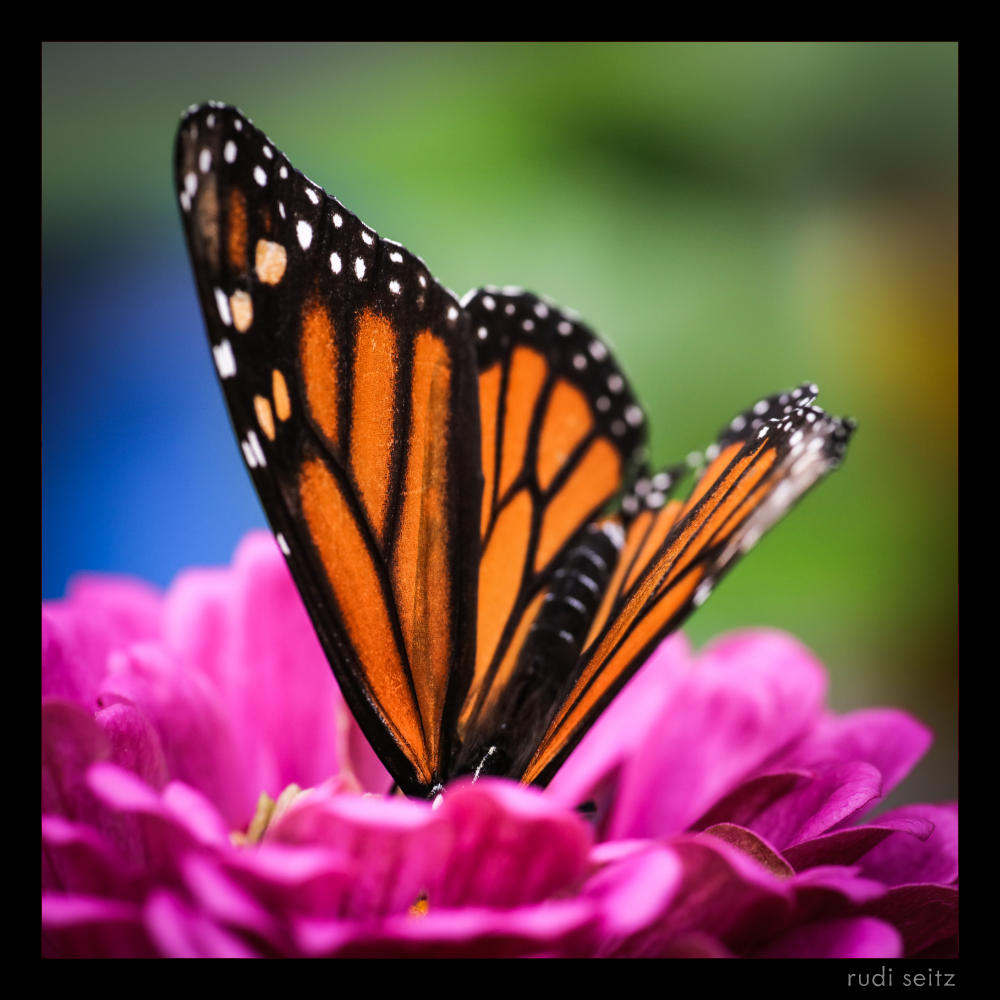
A monarch seen on August 21, 2018 at Eastie Farm in East Boston, MA.
The color contrast in this image has been accentuated, making the flower seem almost psychedelic, and perhaps there’s something fitting about that, when you consider that butterflies are known for having excellent color perception, with the ability to see into the ultraviolet range.
It’s humbling to consider what a butterfly accomplishes in its life. As it searches for nectar, it inadvertently carries pollen from plant to plant, helping those plants reproduce. If it lives for six to eight weeks, how many plants does it pollinate? Hundreds? Thousands? How many resources does it consume, and how much waste does it leave behind?
Ask those same questions of a human. Generally, humans don’t pollinate plants. In fact, a typical human living in the developed world kills vastly more living beings than that same human fosters or assists. A human generates countless tons of non-biodegradable waste and causes the emission of countless tons of carbon dioxide.
If the butterfly’s kindness to plants is not true kindness, because it is inadvertent, so too could it be said that the human’s malice towards plants and other living things is not true malice, because it is inadvertent? We don’t want to pollute, we don’t want to destroy, but we live in a system where pollution is the byproduct of most choices available to us – our choice of what to eat, our choice of where to go, our choice of where to live and how to fuel our home.
Why is it that one being’s effort to survive places it in a virtuous cycle, while another being’s effort to survive places it in a vicious one? Why did it happen that the butterfly’s system of survival leads it to inadvertently assist so many organisms in its short lifespan, while injuring so few, whereas the human’s system leads it to destroy so many while assisting so few? And what does that mean for the longevity of these systems?
A second image of the same butterfly doing a dive:
 ■
■